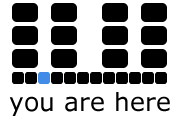Serendipity
by Jentery, Curtis, Matthew & Jamie
One aspect of recognizing the affordances of text requires our availability to move through text or move text serendipitously. Serendipity is the practice of stumbling across standards. In our discussions of a “Standards in the Making” (SITM) approach, standards emerge through this serendipitous process or through conversation. There is therefore a tension between emergence that happens through a potentiality, a fissure in the metadata system, or through more structured, dialogic channels. For Jentery, serendipity becomes necessary when confronted with the issue of volume, in the new work of composing. He writes of the Library of Congress photo analyzed by Matt, “Children asleep,†which was tagged with the word “barefoot,†which was not a piece of text already existing in the metadata of the photo:
“Tags such as ‘barefoot’ arguably foster a kind of ‘stumbling upon’ new materials and thus spark new research into associations or relationships often overlooked when archives are assembled around more familiar schemes (e.g., alphabetization, chronology, location, and discipline).â€
New forms of inquiry emerge as standards in this sort of serendipitous approach. Jamie considers this “the digital ‘afterlife’ of an analog object — a second order instantiation whose context arises from the comments and annotations of readers.â€
The comments motivated by these digital objects or their tagged encodings require not an understanding of serendipity, Curtis writes, but an understanding of “the practice of social tagging as an inherently conversational one.†He continues, that the “real rhetorical ‘work’ of metadata is not how it ‘describes’ individual objects, but how it organizes and consolidates the archive in idiosyncratic and argumentative ways.†The practice of SITM from this perspective is not by chance, but a more structured, dialogic process, where the meaning of an archive is constructed through competition and debate, what Jamie terms a “rhetorical strategy.†Matt notes a further tension in the group’s readings of the Flickr Commons. He writes, “there is a sense that from within this system might emerge new sorts of readings.†However, this potentiality runs against the “machinic language of tags, notes, and comments,†which, as Matt writes, captures the emergent standards. In this sense, the platform greatly influences the potential for serendipity.
As our discussions have illustrated, there is room for multiple understandings of process in the SITM approach to the new work of composing. Compositions emerge through potentiality and serendipity, through contestation and conversation, as well as through machinic, generative constraints. However, what standards are appropriate or possible for what kinds of compositional practices?
